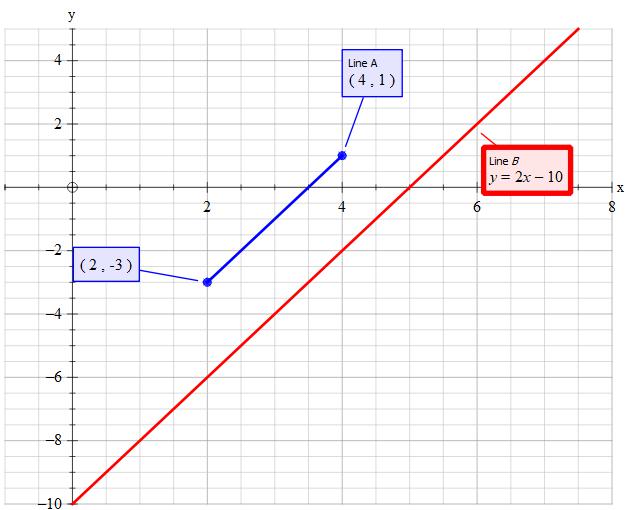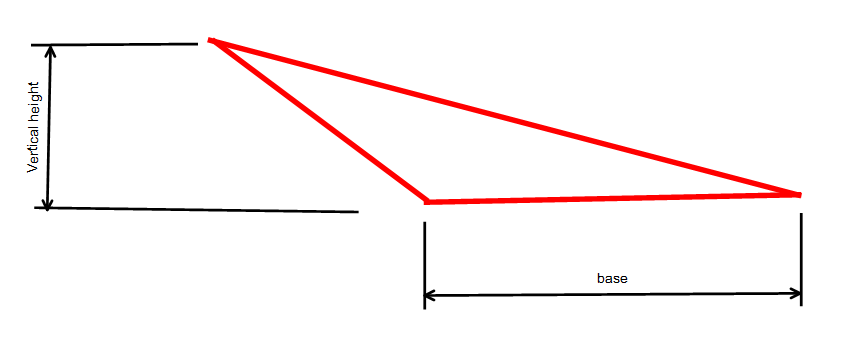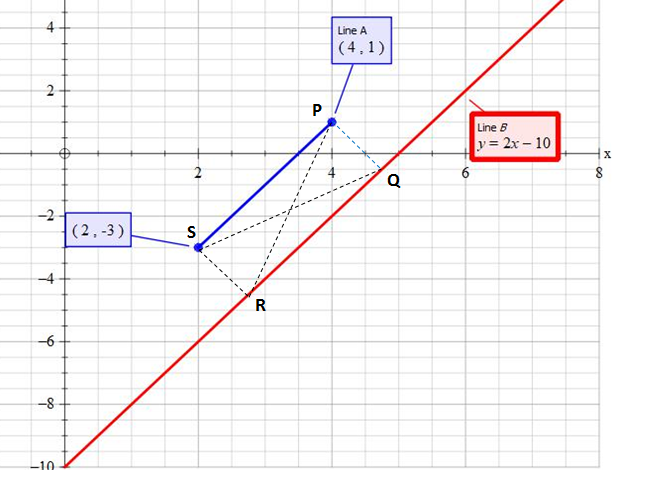The vertex of the right angled triangle lies on the straight line #2x-y-10 = 0# and the two other vertices, at points #(2,-3)# and #(4,1)# then the area of the triangle is?
A)#sqrt10#
B)#3#
C)#33/5#
D)#11#
A)
B)
C)
D)
2 Answers
This is a higher level question which implies you are at a higher level of ability. So I will let
Explanation:

It does not matter where on line B the other vertex is. The area of a triangle is

So we need to determine the equation of the line that is 'vertical' to line A. Make that line pass through its point (4,1) and determine its intersection with line B. From that find the distance between the relevant points and we have got it!
Line A and B have the gradient of 2. So the gradient of the line vertical to them is
This its equation is
It passes through the point
Thus we have:
Consider
Substitute
Substitute back into
So the vertical height is the distance between
So
.
I got the option (B) i.e 3squnit
Explanation:

The equation of the given line is
Again the line segment joining two points
The slope of the line segment forming base is
Hence we can also say that the length of the perpendicular from any of the two given points on the given straight line on which the vertex of the triangle lies, will represent the height of the required triangle .
Applying the formula of length of the perpendicular from a point
Length of the perpendicular
So height of the triangle which is the length of the perpendicular from
The length of the base of the triangle
Hence the area of the triangle
The two possible triangles are


